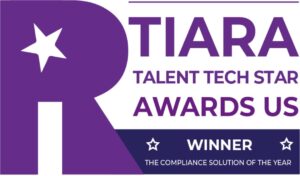Hiring, training, and retaining top talent demands mountains of time and effort. But what happens when an organization fails to offer a good employee experience?
They simply risk losing their investments. An employee will naturally leave their current organization for greener pastures if they don’t feel valued. Those who do choose to stay in poor working environments often feel demotivated and devalued. This wounds the overall company culture and stunts its capacity for growth.
But what exactly is a good employee experience? How can organizations create it? What role does HR play in the overall process? Read on to understand!
What Makes a Good Employee Experience?
Employee experience relates to how happy and comfortable your employees feel each time they step into their (physical or remote) workplace. It also refers to their feelings about their roles, coworkers, leaders, and workplace culture.
An employee may feel a strong connection toward their work. But if they fail to feel the same way about their coworkers and workplace, they may feel isolated from other employees and disconnected from the overall organizational culture.
Creating the right employee experience often relates to bridging the gap between an employee’s engagement with their role and their engagement with the overall organization.
Why Having a Positive Experience is So Important
The benefits of a positive employee experience are endless. Above everything else, a great employee experience can allow your workers to fall in love with the idea of coming to work, succeeding in their role, and maintaining a solid team spirit. Here are some positive impacts of a good employee experience:
- Reduction in absenteeism
- Reduced safety incidents
- Improvement in work quality
- Higher possibility of attracting new talent (when a current employee recommends your organization to a high-performing candidate)
- Solid talent retention (why would anyone want to say goodbye to a workplace they love, right?)
- Team productivity that skyrockets
- Increased potential for growth
What Strategies Can You Implement to Improve Employee Experience?
When it comes to creating a positive employee experience, a one-size-fits-all game plan rarely works. HR professionals must understand the unique needs of their organization and employees to align both towards a larger goal. Here are a few strategies to consider when improving your organization’s employee experience:
Deploy Employee Surveys and (Always) Take Feedback Seriously
A great way to identify the areas of improvement is to send out anonymous employee surveys. These surveys can help track your company’s culture by unlocking new insights and early red flags on team morale, and employee mood and energy. Take the following questions into account when designing your employee survey:
- What is the employee’s mood and energy like in the workplace?
- How high is employee engagement and is it impacting productivity?
- Is the engagement better compared to the previous year?
- Did a recent organizational change impact the workplace culture?
Once you receive feedback, make sure you follow up with your employees to share some survey insights and implement the right steps to address any issues immediately. Including employees in the implementation of these plans goes a long way to get buy-in on change.
Prioritize Employee Experience at Every Stage of the Employee Lifecycle
The employee lifecycle includes seven stages that your employees experience right from joining your organization to saying their final goodbye.
The employee experience you create across every stage reveals how your employees view your organization and what they feel about their workplace culture. What they experience at each stage directly impacts how well they perform and how efficiently your organization grows. Here are a few critical questions to ask when creating a good experience across all stages of the employee lifecycle:
- Stage 1 (Hire): How fair is your hiring process? Is it muddled up with unconscious biases? Does it pick candidates whose values align with that of the organization?
- Stage 2 (Onboard): Do new hires get to familiarize themselves with your company’s values? How well does your employee handbook help new hires? Do they feel positive about joining the team?
- Stage 3 (Engage): Do your employees feel enthusiastic and motivated toward work? Do they feel a sense of purpose and show up every day?
- Stage 4 (Perform): Does every worker’s performance review look fair? How well are they meeting (or exceeding) expectations? Does your management team provide regular, actionable feedback?
- Stage 5 (Develop): Do your best employees like the idea of working with your company for the long term? Do you offer a solid career progression? Do you coach career growth?
- Stage 6 (Depart): Why do your best-performing employees leave? What patterns of issues can you establish? How can you resolve them?
Give Them Meaningful Work
Providing your employees with meaningful work is another brick in the monument of a positive employee experience. Encourage your team to create a work environment that allows them to give their best performance. Welcome new ideas, encourage them regularly, and train them to make autonomous decisions.
Boost Employee Engagement
High employee engagement is inextricably linked with positive employee experience. Focus on your employees’:
- Physical engagement. Your employees will feel more engaged if their mental and physical capabilities are positively utilized for work.
- Emotional engagement. This is directly linked to the kind of relationship they have with your business. Make them feel involved in your organization’s culture and invested in working as a team.
- Cognitive engagement. This relates to how well your employees understand your company’s values and objectives. Let your employees know their work makes a massive contribution towards your organization’s goals.
Unlock Flexibility
With remote and hybrid work models becoming the new normal, organizations must be willing to allow employees to choose where and how they want to work, when possible. This can not only promote a better work-life balance among your employees, but also become a source of attracting talent from across the globe.
Be Empathetic
How do your employees feel right now? What do they wish could’ve been better? Why are they acting in a certain way? How can you help them through a difficult situation? Putting yourself in your employees’ shoes and asking empathetic questions can help you identify and resolve issues faster and more efficiently. When employees feel understood, they naturally feel more motivated towards their work and more engaged with their workplace.
Promote Diversity, Equity, and Inclusion (DE&I)
Companies that enjoy a thriving work culture often oscillate towards diversity, equity, and inclusion (DE&I) initiatives. These initiatives unlock oceans of innovation and creativity. They allow every employee to offer their unique perspective and experience. When team members enjoy a sense of belonging at work, their morale, team spirit, and productivity shoot up.
Be Clear About Your Expectations
It is critical for your employees to know what is expected from them right from the very beginning. Use your onboarding process as an opportunity to clearly communicate responsibilities and expectations. When employees know what is expected of them, they are in a better position to perform their best.
Provide Incentives and Offer Growth Opportunities
For employees to care about your organization, they must feel heard, valued, and appreciated. Offer competitive wages, benefits, and bonuses to those who give their best performance.
Provide career opportunities to align your current employees’ hard work with your organization’s future success. Lay out how promotion opportunities exist at your organization in your employee handbook to ensure transparency and fairness. You can even offer other forms of incentives such as comprehensive health plans, stock options, and personal development programs.
Over to You!
Great HR professionals understand that crafting a great employee experience requires more than just a decent paycheck. They acknowledge that every employee wants to feel valued, respected, and supported. To implement this experience, HR professionals must understand the values of employees, help them grow consistently, lead them toward achieving organizational goals, and reward them for the work they’ve done.






